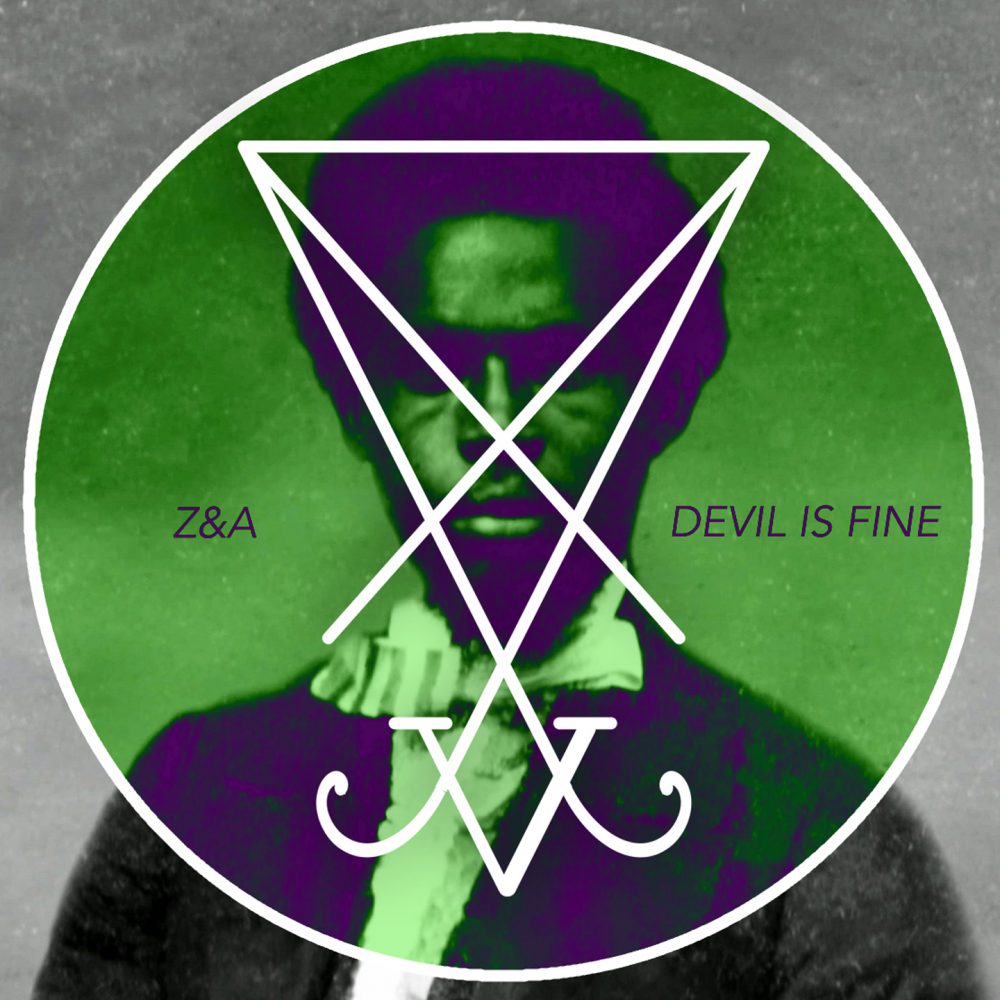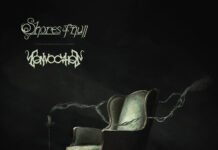Just when you think you’ve seen it all, you come across something like this. ZEAL AND ARDOR is a one-man project by Swiss-born Manuel Gagneux, which he describes as spiritual black metal blues. Now, combining blues and metal is hardly a new idea but ZEAL AND ARDOR doesn’t stop at that. I came across the titular track “Devil is Fine” earlier this year whilst browsing upcoming releases and I was hooked after the first listen. It was an ingenious mix of African-American crooning and Luciferian black metal. It brings to mind the devil-infused early days of blues. It’s Gagneux‘s imagining of America’s slaves rebelling in the same way as Nordic black metallers, i.e. by turning to the Lord of Light.

Sure enough, the first track, “Devil is Fine,” starts with a howling Southern voice screaming the gospel of the adversary of the soul. His warbling is accented by the rhythmic chime of men in chains in the midst of hard labor. In this song, the familiar guitars and blast beats of black metal take a backseat to the power of wicked prayer. The idea becomes crystal clear, to these people Satan is the only salvation. He offers everything but demands very little. These people live in hell so the lake of fire is no deterrent. The sound is superbly distorted through reverb with just enough simple piano accompaniment to really drive the point home. This song alone is one of the most interesting things I’ve heard in a good while. The guitars kick off “In Ashes” but still remain mostly as a background element. The African-American round singing turns possibly even more ominous with this one. The line “Burn the young boy, burn him good” should send a chill down any goodly little lamb’s spine. The whole song expresses doubt in a god and begins to revel in the realization of his absence. The minimal use of guitars and growling vocals serve to illustrate this. It goes slow when it wants to be creepy and fast when it wants to embrace the flames. It’s incredible how effective it is. This being the first new song I’ve heard on the record, I’d say we’re off to a grand start.
At this point one would be forgiven for double-checking that they’re still listening to the same album. “Sacrilegium I” is a straight-up electronic house music song. In any other context I’d rule it as nothing more than a way to test my sub-woofer. I wouldn’t recommend it to fans of EDM, however, since it takes every opportunity to mess with the time signature and would prove very difficult to dance to. In its 2 minute runtime, it does manage to dish out one good DAFT PUNK-esque melody and a lot of what I believe today’s youth refer to as “sick beats.” It’s not entirely removed from the album since it does have some recordings thrown in which fit the larger tone. A strange interlude, no doubt but it keeps the listener on their toes.
A beautifully over-reverbed vocal melody gets us back on track; it’s very gospel-inspired and catchy, the cornerstone of “Come on Down.” If you came for fast guitars and growls – this one is for you. The guitar melodies are recognizably black metal with a few dips into modern melodic death metal and some more dulcet breaks. Here Gagneux gets to show off his pipes a bit more as the vocals get more powerful while still remaining properly soulful. The growling vocals, however, remain as mere occasional roars. That being said, they are perfectly placed and gorgeously nuanced, even when the song would’ve already been great as is it still dares to end in a melancholy and subdued note. As I’m analyzing it, I realize that on paper it shouldn’t work, but somehow it still does. A true testament to Gagneux‘s musicianship – it makes me want to listen to it again and again.
It seems “Children’s Summon” heard my prayers and not only brings even heavier and more ferocious guitars into the mix but also echoes elements of “Come on Down.” The guitars shred away in the background while an enthralling synth melody takes center stage. This is, at times, either somewhat downplayed or completely halted by Satanic chants (my Latin is a bit rusty, so forgive me if I classify anything with “hail” and “Satani” in it as Satanic.) “Children’s Summon” has a sense of urgency that no other song on the album has. It’s not just fast, it’s ridiculously fast. I can see why it takes breathers – I certainly would. “Sacrilegium II” sounds like the devil’s music box. No really, it’s a music box. But even this gentle lullaby has an underlying eeriness to it. Seeing as the last part of this song was a detour, it seems prudent for the continuation to also be a subversion of the formula. The logically illogical intermission has a very subtle and gradual build-up. Starting out with just the clear sound of thin strands of metal reverberating as they are plucked by tiny bumps on a rotating cylinder, it simulates the sensation of falling asleep by fading into a blurry, ethereal world. If anything on this album could be referred to as ‘lovely’, this would be it.
Going back to what I only hesitantly describe as the status quo, “Blood in the River” sees the return of the chains and pickaxes, as well as the blast beats. This is the point at which the sheer speed and precision of the kick-drum makes sure everyone can see that the drums are programmed. Though that may annoy some listeners, they are still at very least fitting for this record. The dark parish’s mantra of “a good god is a dead one” isn’t even the half of it for this one. I would recommend exercising caution in choosing the company in which one should listen to this. Positively evil and exhilarating – a high-speed barrage of defiant rage.
Not enough songs begin with a clear bass-line. When they do, however, it usually works. “What is a Killer Like You Gonna Do Here” has a smooth, slow, and low groove. Gagneux brings his vocals way down to a gravely baritone in order to issue some spoken-word prose. This is further accented by beatnik-y finger-snaps which make me want to rumble with The Sharks, but we don’t want to advocate musical violence so we suggest the listener simply nod in agreement whilst preferably in a turtleneck and beret. Halfway through the song, the guitar joins in with with a defiantly 1950s sound. An exemplary blues guitar solo brings the song home before it fades out in anticipation for the finale.
Bringing the album to a close is “Sacrilegium III.” It’s best seen as an outro or epilogue; it’s not a grandiose epic but simply a moody synth melody and not much else. It layers those synths expertly and always knows to what it wants to draw the listener’s attention. It invokes a feeling of dread and emptiness. It echoes as if in a chasm of despair and leaves us there wanting for more.
My hopes for this album were so lofty that I wasn’t sure it’d ever meet them. However, even on the first listen I knew this artist was far from a one-hit-wonder. It’s a bizarre record that doesn’t feel at home at either parties or lazy Sunday reading sessions. What it is though, is a fantastic, subversive, innovative, and memorable record. It’s not just a cheap mix of genres – each move seems deliberate and poignant. The Satanism never feels shallow or attention-seeking, but genuine and fresh. For its short runtime, this is an exceptionally well-put-together album with all the makings of a modern classic. I would be surprised if I heard a more interesting release all year.
Written by Vincent Parkkonen
Musicalypse, 2017
OV: 2443
Tracklist
- Devil is Fine
- In Ashes
- Sacrilegium I
- Come On Down
- Children’s Summon
- Sacrilegium II
- Blood In the River
- What is a Killer Like You Gonna Do Here?
- Sacrilegium III
Lineup
Manuel Gagneux
Label
MCKA
Links
Recent posts
[recent_post_carousel design=”design-1″]





